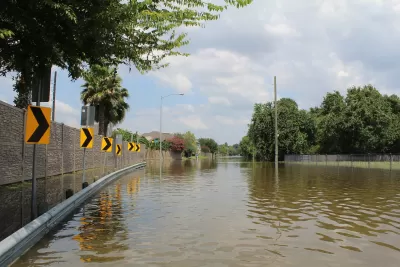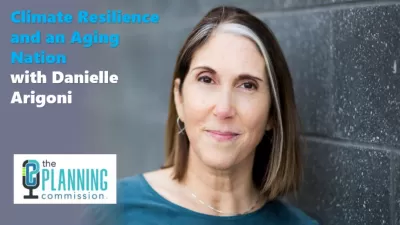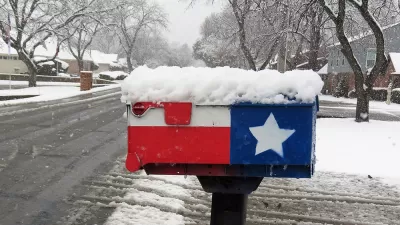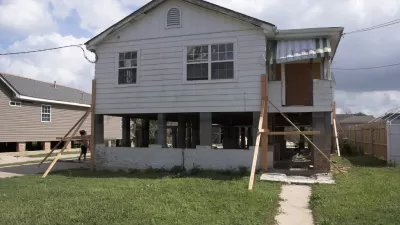A new report outlines a long list of measures the state needs to take to prevent catastrophic outcomes. However, it avoids directly discussing climate change as a cause of increasingly severe natural disasters.

A new report from the Governor’s Commission to Rebuild Texas takes an in-depth look at the impacts of Hurricane Harvey as well as response and recovery efforts.
The report describes the $125 billion of damage left by Harvey, along with the tens of thousands of people who were displaced and the loss of over 12,000 structures. Proposed strategies include the elevation of homes, a buyout program to move residents located in high-risk flood zones, and protection of wetlands.
The report also recommends construction of an $8 billion barrier against storm surge. "To be composed of a 57-mile-long land barrier and two 22-foot-high movable gates, it would be built to protect residential and industrial areas in Galveston Bay and the Houston Ship Channel," says Anna Kuchment.
Critics, however, say the report does not do enough to address the role of climate change. "While the report, 'Eye of the Storm,' takes into account findings from climate scientists, including that sea levels are rising and storms are becoming more frequent and severe, nowhere does it explicitly mention climate change or its main underlying cause, the burning of fossil fuels," reports Kuchment.
FULL STORY: Hurricane Harvey report seeks to 'future-proof' Texas from climate change without saying so directly

Planetizen Federal Action Tracker
A weekly monitor of how Trump’s orders and actions are impacting planners and planning in America.

San Francisco's School District Spent $105M To Build Affordable Housing for Teachers — And That's Just the Beginning
SFUSD joins a growing list of school districts using their land holdings to address housing affordability challenges faced by their own employees.

The Tiny, Adorable $7,000 Car Turning Japan Onto EVs
The single seat Mibot charges from a regular plug as quickly as an iPad, and is about half the price of an average EV.

Seattle's Plan for Adopting Driverless Cars
Equity, safety, accessibility and affordability are front of mind as the city prepares for robotaxis and other autonomous vehicles.

As Trump Phases Out FEMA, Is It Time to Flee the Floodplains?
With less federal funding available for disaster relief efforts, the need to relocate at-risk communities is more urgent than ever.

With Protected Lanes, 460% More People Commute by Bike
For those needing more ammo, more data proving what we already knew is here.
Urban Design for Planners 1: Software Tools
This six-course series explores essential urban design concepts using open source software and equips planners with the tools they need to participate fully in the urban design process.
Planning for Universal Design
Learn the tools for implementing Universal Design in planning regulations.
Smith Gee Studio
City of Charlotte
City of Camden Redevelopment Agency
City of Astoria
Transportation Research & Education Center (TREC) at Portland State University
US High Speed Rail Association
City of Camden Redevelopment Agency
Municipality of Princeton (NJ)





























